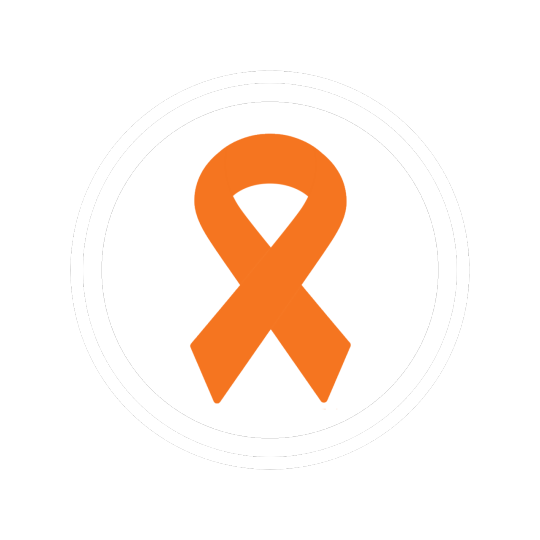#hypercalcemia
Explore tagged Tumblr posts
Text
What Is A Calcium Blood Test?
The calcium blood test is a simple and popularly used test for determining one's "risk" for a variety of diseases. A patient will typically have in-office phlebotomy to obtain blood, with lab technicians then taking the sample to check the level of calcium in the blood with point-of-care laboratory equipment.
0 notes
Link
The Power of Zometa: A Comprehensive Guide to Understanding and Utilizing its Benefits Understanding Zometa What is Zometa? Zometa is a potent bisphosphonate drug that is widely used in medical treatments. It is composed of the active ingredient zoledronic acid, which works by inhibiting bone resorption. [caption id="attachment_60005" align="aligncenter" width="510"] Zometa[/caption] Mechanism of Action Zometa works by targeting and inhibiting the activity of osteoclasts, the cells responsible for breaking down bone tissue. By suppressing osteoclast function, Zometa helps prevent excessive bone resorption and promotes bone density preservation. Additionally, Zometa has been shown to stimulate osteoblasts, the cells responsible for bone formation, leading to improved bone strength and structure. Medical Applications Zometa is primarily used in the treatment of various bone-related conditions, including osteoporosis, bone metastases, and hypercalcemia of malignancy. It is also utilized in certain cancer treatments to reduce the risk of skeletal-related events such as fractures and spinal cord compression. Benefits and Efficacy Preventing Bone Loss and Fractures Zometa plays a crucial role in preventing bone loss and fractures. Studies have shown that Zometa significantly reduces the risk of fractures in patients with osteoporosis. Its ability to inhibit bone resorption helps maintain bone density and strength, reducing the likelihood of fractures, particularly in postmenopausal women. Managing Osteoporosis Zometa is highly effective in managing osteoporosis. It is often prescribed when other osteoporosis medications have failed to produce satisfactory results. Zometa helps increase bone mineral density and reduce the risk of fractures, making it a valuable treatment option for individuals with osteoporosis. Treating Bone Metastases Zometa is widely used in the treatment of bone metastases, which occur when cancer spreads to the bones. By inhibiting bone resorption and promoting bone strength, Zometa helps alleviate pain, reduce the risk of fractures, and improve the overall quality of life for patients with bone metastases. Administration and Safety Dosage and Administration Zometa is administered intravenously and the dosage depends on the specific medical condition being treated. It is typically given once every 3 to 4 weeks. The dosage and frequency may vary based on individual patient factors, so it is important to follow the instructions provided by the healthcare professional. Potential Side Effects While Zometa is generally well-tolerated, it may cause some side effects. Common side effects include flu-like symptoms, fever, bone pain, and gastrointestinal disturbances. It is important to discuss any concerns or side effects with the healthcare provider. In rare cases, Zometa may cause more serious side effects such as osteonecrosis of the jaw or kidney problems. Drug Interactions and Contraindications Zometa may interact with certain medications, including other bisphosphonates, diuretics, and nonsteroidal anti-inflammatory drugs (NSAIDs). It is important to inform the healthcare provider about all medications being taken to avoid potential interactions. Zometa is contraindicated in patients with severe renal impairment and should be used with caution in individuals with pre-existing kidney problems. Frequently Asked Questions How long does Zometa stay in your system? Zometa has a half-life of approximately 146 hours, which means it takes about 6 days for half of the drug to be eliminated from the body. It may take several weeks for Zometa to be completely cleared from the system. The elimination time can vary depending on factors such as age, kidney function, and overall health. Can Zometa be used in pediatric patients? Zometa is not typically used in pediatric patients. Its safety and efficacy in children have not been extensively studied. However, in certain cases, such as pediatric osteogenesis imperfecta, Zometa may be considered under the close supervision of a pediatric specialist. Is Zometa covered by insurance? Insurance coverage for Zometa may vary depending on the specific insurance plan. It is advisable to check with the insurance provider to determine coverage details. Additionally, there may be cost-saving options available, such as patient assistance programs or manufacturer discounts, which can help reduce the out-of-pocket expenses for Zometa. Can Zometa be administered at home? Zometa is typically administered in a healthcare setting, such as a hospital or clinic, under the supervision of a healthcare professional. However, in certain cases, where appropriate training and resources are available, home administration may be considered. This decision should be made in consultation with the healthcare provider to ensure proper administration and monitoring. Are there any dietary restrictions while taking Zometa? There are no specific dietary restrictions associated with taking Zometa. However, it is important to maintain a healthy and balanced diet to support overall bone health. Adequate intake of calcium, vitamin D, and other essential nutrients is beneficial for maintaining strong and healthy bones. What should I do if I miss a Zometa dose? If a Zometa dose is missed, it is important to contact the healthcare provider for guidance. They will provide instructions on rescheduling the missed dose and adjusting the treatment plan accordingly. It is generally not recommended to double the dose or make any changes without medical advice. Can Zometa be used during pregnancy? Zometa is not recommended for use during pregnancy unless the potential benefits outweigh the potential risks. The safety of Zometa in pregnant women has not been established, and it may have adverse effects on fetal development. It is important to discuss the risks and benefits with the healthcare provider before considering Zometa treatment during pregnancy. How long does it take for Zometa to show results? The time it takes for Zometa to show results can vary depending on the specific medical condition being treated. In some cases, such as hypercalcemia of malignancy, the effects of Zometa can be seen within a few days. However, for conditions like osteoporosis, it may take several months of treatment to observe significant improvements in bone density and fracture risk reduction. Conclusion: Zometa is a powerful medication that offers numerous benefits in the management of bone-related conditions. By understanding its mechanism of action and medical applications, individuals can appreciate the potential advantages of Zometa therapy. It is important to follow the prescribed dosage and administration guidelines while being aware of potential side effects and drug interactions. Consulting with healthcare professionals is crucial to receiving personalized advice and ensuring the safe and effective utilization of Zometa. With its ability to prevent bone loss, manage osteoporosis, and treat bone metastases, Zometa continues to be a valuable asset in the realm of medical treatments for bone health.
#bisphosphonate#bone_density#Bone_health#bone_loss#bone_metastases#bone_resorption#Cancer_treatment#hypercalcemia#osteoporosis#Zoledronic_acid
0 notes
Text
Okay, so I’ve got 3 fics sitting around gathering virtual dust, and I want to post them on AO3 (despite the fact they're basically garbage) but I can’t decide which one deserves to go first. They’re all fully written, but I’m too indecisive, so I’m making you all choose for me. Here’s the lineup:
1. Wonderwall
Regulus gets kicked out by his lovely (sarcasm) parents and shows up at Sirius and Remus’s place with nowhere else to go. Awkward timing, because Remus had this whole romantic ski trip to the Swiss Alps planned where he was gonna propose to Sirius. But hey, family drama waits for no one, so Remus invites Regulus to join them in an attempt to fix things between the Black brothers. Meanwhile, James is working at a resort owned by his parents in the Alps (because why not), and he and Regulus cross paths. Cue romance, angst, and lots of snow.
Also, fun fact: I wrote this whole thing in one weekend after I twisted my ankle trying to ski in Jackson Hole last December (thanks to my roommate) It’s a longfic. It’s a mess. I love it.
2. While You Were Sleeping
Yes, it’s exactly what it sounds like—a While You Were Sleeping AU. Regulus works in the Ministry Archives, silently pining over Auror James Potter, who doesn’t even know he exists. One day, Regulus saves James from what could’ve been a tragic accident, and somehow, everyone ends up thinking he’s engaged to James. Oh, and James? He’s in a coma. While hanging around James’s family and friends, Regulus ends up falling in love with the real James he gets to know (without actually talking to him, oops). Everything’s sweet until James wakes up.
Expect misunderstandings, cute moments and possibly second hand embarrassment.
3. A Bed by Any Other Name
Regulus has hypercalcemia, his body’s basically giving up on him, and surgery is his only hope. Problem? He needs someone to look after him until then. His parents are conveniently in France, so guess where he ends up—Sirius’s house. Sirius is an artist married to Remus, a college professor. Regulus might have a tiny crush on Remus, but things really get interesting when he meets James Potter, a Literature professor who’s obsessed with Marcel Proust and has a thing for over-the-top romantic gestures.
This fic is about illness, recovery, love, and a whole lot of Marcel Proust out of context. You're welcome.
#marauders#marauders era#dead gay wizards from the 70s#dead wizards from the 70s#sirius and regulus#james loves regulus#james x regulus#jegulus#regulus black#regulus x james#starchaser#james potter x regulus black#regulus and sirius#james fleamont potter#james potter#wolfstar#the marauders#the marauders fandom#marauders fanfiction#marauders fic#harry potter marauders#starchaser fic#jegulus fic
35 notes
·
View notes
Text
So apparently my blood test results showed up, and the only things that are mildly fucky are things that have to do with having too much calcium in your blood - something that'd apparently explain the constant need to go through liquids like a big city sewer system - but besides the fatigue and endless pissing, the list of symptoms of hypercalcemia also includes anxiety and depression. I've got a doctor's appointmen in two weeks and I'm not going to jump into my own conclusions before hearing what they have to say, but wouldn't it be funny if my lifelong struggles with mental health issues that haven't been helped by antipsychotics, antidepressants or anything of the sort had - this whole time - been caused by
having too much bones in my blood.
586 notes
·
View notes
Note
Good morning! I have a question. When I look up info about vitamin D, I come across many claims that people generally don't get enough of it. In a recent episode of Maintenance Phase, however, the hosts called it a "scam" or overblown, at least (I don't remember the exact wording). So, like, what's the deal with vitamin D? Do Americans get enough of it?
Probably, mostly. At the very least, people should be tested before starting repletion. It probably has a role in osteoporosis treatment and prevention, BUT how much to take and what form and when is HOTLY debated and frequently conclusions are changing.
Just to take you on a spin through the most recent Cochrane reviews (THESE ARE NOT SINGLE STUDIES, in case any of the research-naive out there want to get pissy about them; look up what a Cochrane review actually is before trying to shit on it; also note that I did NOT say this will cover every fucking person and every hypothetical they can come up with, jesus CHRIST):
No role for vitamin D in asthma
Insufficient evidence to recommend it in sickle cell
Raising vitamin D levels in cystic fibrosis patients is not beneficial
No evidence of benefit of vitamin D in MS
Supplementing vitamin D in pregnancy may have small benefits but also risk of harms
No clinically significant benefit from vitamin D supplementation in chronic pain
Insufficient data on vitamin D in inflammatory bowel disease, but no evidence of benefit
No evidence of benefit of vitamin D supplementation in liver disease
Vitamin D does not appear to prevent cancer in general population
No evidence for benefit in supplementation of vitamin D in premenopausal women to prevent bone density loss
Possible small mortality benefit of D3, but not D2, in elderly patients, but also increased risk of kidney stones and hypercalcemia
Vitamin D alone ineffective, but combined with calcium may be effective, in preventing bone fractures in older adults
Insufficient evidence for vitamin D improving COVID-19 outcomes
Now, vitamin D plus calcium in people who have post-menopausal bone density loss does seem to prevent fractures. This is why doctors routinely recommend it. However, dosage and formulation are still debated as data are insufficient, and uncertainty still large.
So, do you need to supplement? Probably not. There is some fairly weak evidence that vitamin D supplementation may help with depression, but I would argue that it's going to be most relevant in people with pre-existing deficiencies, which Medicare is just hellbent on not letting me test for anymore. They've narrowed the coverage codes for testing so now even know vitamin D deficiency isn't considered a good enough reason to test. So Medicare has very clearly decided it's not relevant, for whatever that's worth, I spit on their graves, etc. Of course, then you get into the question of what counts as a deficiency, which we also really don't know.
And to be clear, I wasn't looking through the Cochrane review results with an angle--those are most of the first page of search results on their site, with the only one skipped being similar to another one I mentioned, and I stopped when I got bored. These should not be paywalled, as I am not logged into anything and I can read it all, so try clicking the side menu on the right if you have trouble getting into the weeds.
If anything, running through this little exercise has made me less likely to recommend vitamin D supplementation, so do with that what you will.
57 notes
·
View notes
Text

The Science Research Notebooks of S. Sunkavally, p 553.
#Ataxia telangiectasia#benign cancer#electrolyte disturbances#DNA repair#Pascal's principle#tyramine#hypercalcemia#diabetes#nephrotic syndrome#diabetes of pregnancy#manuscript#satyendra sunkavally#theoretical biology
1 note
·
View note
Text
Just over here deep diving into cat food because of Maeve’s idiopathic hypercalcemia. She hates/is still so hungry with the RX wet foods, and the ingredient lists are huge. She already has a fiber supplement and chia seed that gets added to her food which helps her maintain normocalcemia.
The RX food was recommended by the vet and brought her calcium levels down a bit, but the chia seed is what brought her to normal levels.
Last night I had to grab a couple cans of food to hold her over till the RX food comes in, and the ingredient list was just chicken & broth. And she LOVED it and it was more food, rather than liquidy gravy like her RX food.
So I think we are gonna try switching over to the food she had last night and see how her levels are at her next blood work (we go every 3 months).
This is just me working out my thought process into the void about my cat. I don’t want to do anything that will hurt her health, and upon more research into hypercalcemia her RX food has some ingredients/additives that should be avoided. Cause the diets are for cats who have renal issues or are overweight. They just recommend them because they see some lowering of calcium levels with them.
16 notes
·
View notes
Text



Leukemia and Lymphoma Awareness Flags!!
This flag was designed by us, as we currently have a family member with Leukemia and wish to bring awareness to this kind of cancer.
color meaning:
#FF2D34: Myeloma
#00DC0E: Non-Hodgkin Lymphoma
#FF8C2E: Leukemia
#D12DFF: Hodgkin Lymphoma
Below is information all about Leukemia and Lymphoma Cancers.
Leukemia and Lymphoma are both cancers that are not associated with a tumor. Lymphomas are cancers that affect the lymph system and start in cells called lymphocytes. Leukemia is a cancer of the early blood-forming tissues, including your bone marrow and lymph system.
There are many types of lymphoma. Some grow and spread slowly and some are more aggressive. There are two main types of Lymphoma:
1. Hodgkin Lymphoma is cancer that starts in the B lymphocytes (B cells) of the lymph system. Your lymph system helps you fight infection and control the fluids in your body.
2. Non-Hodgkin Lymphoma (NHL) is cancer that starts in the lymphocytes anywhere lymph tissue is found:
Lymph nodes
Spleen
Bone marrow
Thymus
Adenoids and tonsils, or
The digestive track.
Leukemia typically involves white blood cells, the cells that are your infection fighters. Leukemia can be divided into categories: fast growing (acute) and slow growing (chronic); and by which white blood cells are affected:
Acute lymphocytic leukemia (ALL)
Acute myelogenous leukemia (AML)
Chronic lymphocytic leukemia (CLL
Chronic myelogenous leukemia (CML)
A screening test is used to detect cancers in people who may be at higher risk for developing the disease. With leukemia and lymphoma, there are no early detection tests. The best way to find them is to be aware of the symptoms:
Swollen lymph nodes which can appear as a lump in the neck, armpit or groin;
Fever
Night sweats
Weight loss without trying, and
Fatigue.
Leukemia can have similar symptoms but also can include:
Easy bleeding or bruising;
Recurring nosebleeds; and
Bone pain or tenderness
Myeloma is cancer of the plasma cells. Plasma cells are white blood cells that produce disease- and infection-fighting antibodies in your body. Myeloma cells prevent the normal production of antibodies, leaving your body's immune system weakened and susceptible to infection. The multiplication of myeloma cells also interferes with the normal production and function of red and white blood cells. An abnormally high amount of these dysfunctional antibodies in the bloodstream can cause kidney damage. Additionally, the myeloma cells commonly produce substances that cause bone destruction, leading to bone pain and/or fractures.
Myeloma cells are produced in the bone marrow, the soft tissue inside your bones. Sometimes myeloma cells will travel through your blood stream and collect in other bones in your body. Because myeloma frequently occurs at many sites in the bone marrow, it is often referred to as multiple myeloma.
Signs and symptoms of myeloma include the following:
Hypercalcemia (excessive calcium in the blood)
Anemia (shortage or reduced function of red blood cells)
Renal damage (kidney failure)
Susceptibility to infection
Osteoporosis, bone pain, bone swelling, or fracture
High protein levels in the blood and/or urine
Weight loss
In 2022, more than 62,650 people are expected to be diagnosed with leukemia. In addition:
Leukemia accounts for 3.6% of all new cancer cases.
The overall 5-year survival rate for leukemia has more than quadrupled since 1960.
62.7% of leukemia patients survive 5 years or more.
The diagnosis of leukemia requires specific blood tests, including an examination of cells in the blood and marrow.
Treatment and prognosis depend on the type of blood cell affected and whether the leukemia is acute or chronic. Chemotherapy and blood and marrow transplant are often used to treat leukemia.
If you wish to read more about Leukemia and Lymphoma cancer, please visit this website!
#leukemia#lymphoma#blood cancer#leukemia and lymphoma society#leukemia awareness#lymphoma awareness#blood cancer awareness#pro endo#pro endogenic#endo friendly
9 notes
·
View notes
Text
who is more tormented: jesus or my kitty boy who needs eye drops twice a day and has asthma and hypercalcemia and now we are putting him in a harness and leash in hopes of showing him outside but it just makes him lie down and look sad


12 notes
·
View notes
Video
youtube
SURGICAL PATHOLOGY STATION OF PEPTIC ULCER DISEASE | HYPERCALCEMIA
SURGICAL PATHOLOGY STATION OF PEPTIC ULCER DISEASE | HYPERCALCEMIA MRCS B OSCE - MOCK EXAM Bli medlem i kanalen för att få åtkomst till flera förmåner: https://www.youtube.com/channel/UCkkvon_blxinTHc7DGuYkpQ/join
#youtube#surgicalpathology pathology pepticulcerdisease hypercalcemia hpylori medicine doctor surgery health medical healthcare mrcs mrcsbosce female
0 notes
Text
POFF SHOOTS OF PrEP ( Pre Exposure Prophylaxis for HIV) Clinics by Saraswathi Lakkasani MD in Journal of Clinical Case Reports Medical Images and Health Sciences
Introduction
HIV preexposure prophylaxis (PrEP), is use of antiretroviral medications to prevent acquisition of HIV infection, in a HIV negative person who has on going risk of acquiring HIV. This strategy has proven effective in several recently published reports. The regimen if used optimally has HIV reduction record of 99%. However, there are several positive unforeseen benefits in this strategy. In this observational study we are presenting some additional benefits we observed in our Prep Clinic.
We are reporting the findings of our on-going PrEP Clinic for your perusal. Saint Michaels Medical Center is a 150 to 200 bedded community hospital, at Newark, New Jersey. We follow more than 200 PrEP clients in our Prep Clinic. We follow the state mandated protocol for induction and follow up.
Observation Results
So far there is no seroconversion to HIV after starting PrEP. Two of our clients had successful full term, normal pregnancies with sero negative healthy babies. Statistically significant number of STI’s (sexually transmitted Infections) were diagnosed and successfully treated and Significant number of unimmunized clients for Hepatitis B and A were identified and immunized. One case of uncontrolled diabetes and one hypercalcemia were identified at the initial visit and referred to the respective specialist. One patient was found to have anal mass, six months into the program, being pursued by colorectal surgeon.
Conclusion
Among the risk groups benefited by PrEP, the use of PrEP has increased by 500%. The average age group of clients falls between 25 to 35 who are in good health and with very few comorbidities who may or may not come to Primary care clinics on regular basis.
PrEP clinics gives an excellent opportunity to detect, diagnose and treat some of the commonly missed but treatable medical issues. The demand will be increasing in future. Our findings may be the tip of an iceberg.
#OFF SHOOTS OF PrEP#Pre Exposure Prophylaxis for HIV#Saint Michaels Medical#Clinical Images journal#Clinical decision making#Journal of Clinical Case Reports Medical Images and Health Sciences impact factor
2 notes
·
View notes
Text
so if my kidney stones are due to hypercalcemia that's not caused by parathyroid dysfunction that basically leaves cancer and vitamin d overconsumption (and a handful of other things) as the causes, or its just idiopathic because my kidneys are idiots i guess?
this vexes me
3 notes
·
View notes
Text





Arya is still doing great with her new food and meds! She goes for a bloodwork recheck for her hypercalcemia and a couple weeks. Here is a little photo shoot, where she made a cute bleep! Post your cat’s bleep pictures! We want to see them all! 😻❤️
7 notes
·
View notes




